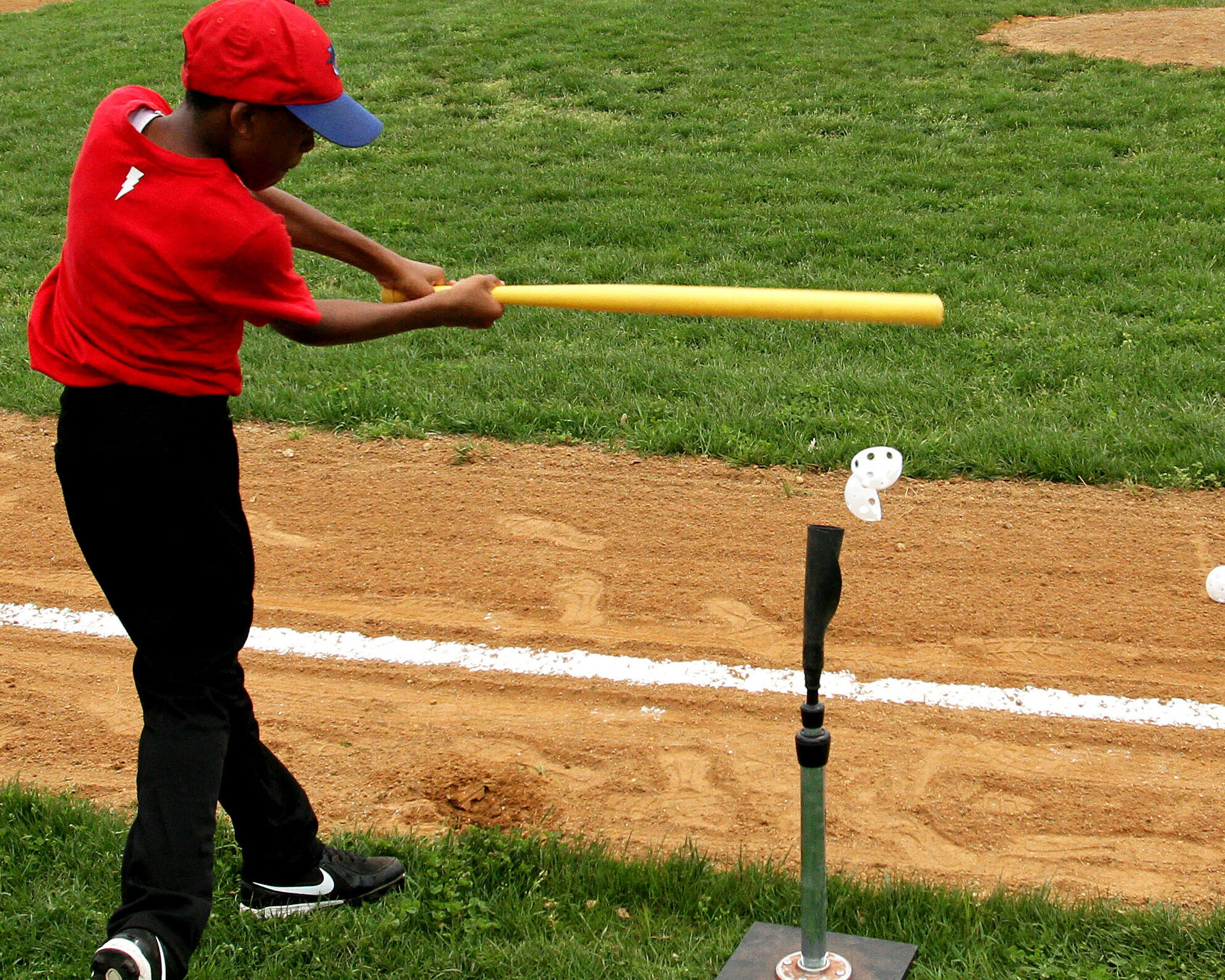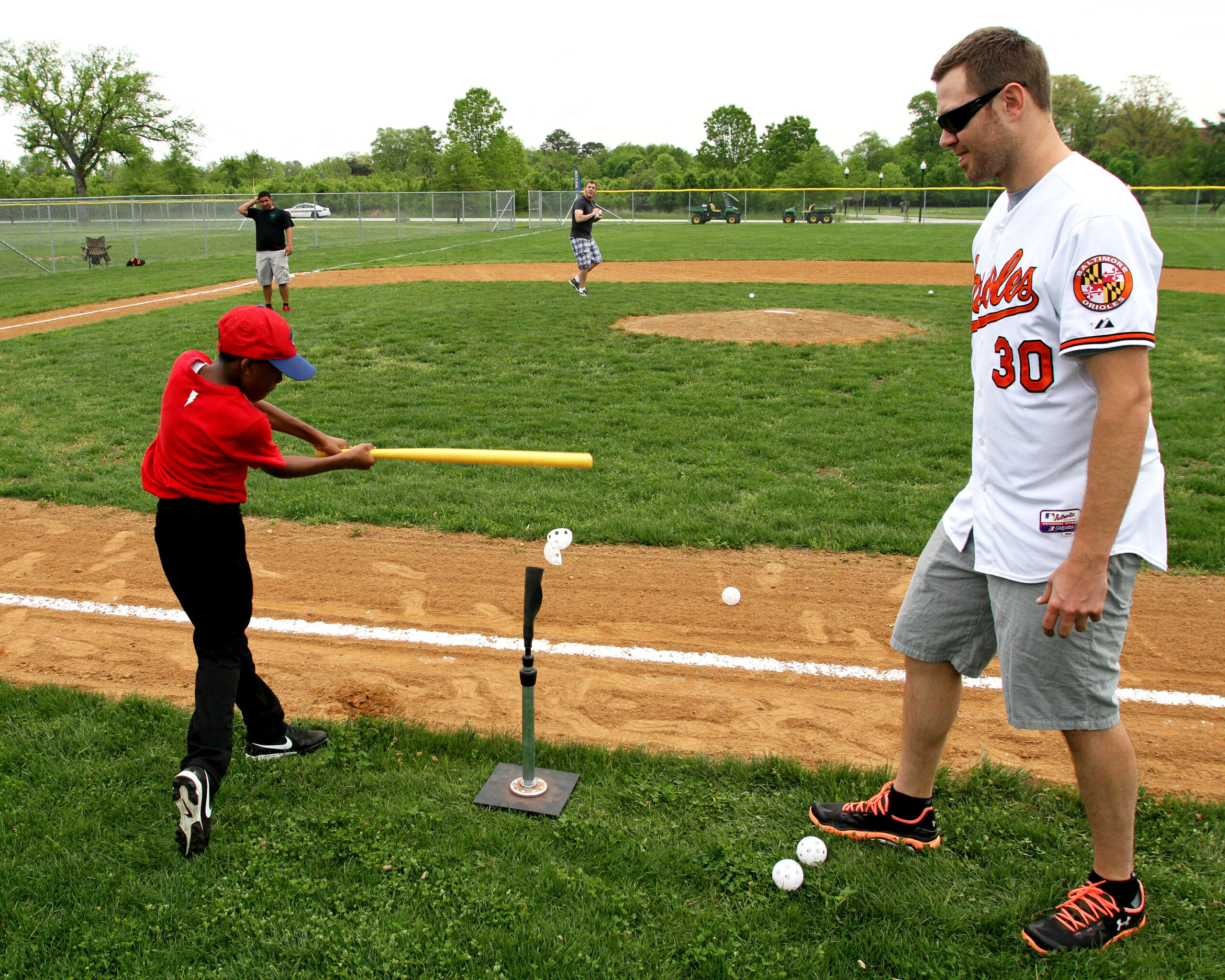As parents of Little League players, we know how crucial it is to help our kids build a solid foundation for their baseball skills. One of the most essential aspects of becoming a strong hitter is developing the perfect swing. Whether you’re watching from the stands or actively coaching, understanding what goes into the mechanics of a great baseball swing can make a world of difference in your child’s performance.
The key to a successful baseball swing lies in the fundamentals: grip, balance, body mechanics, and proper technique. A combination of these elements can make the difference between hitting a solid line drive or striking out. In this article, we’ll break down the most important components of the perfect swing, and we’ll give you tips on how to help your Little Leaguer maximize their hitting potential. So grab your batting gloves, pick up a bat and lets get swinging.

1. Why a Balanced Stance is Essential for a Powerful Baseball Swing?
A balanced stance is the foundation of every successful baseball swing. Think of it like building a house—without a solid base, the entire structure is at risk. For your Little Leaguer, starting with a balanced stance helps ensure stability, control, and power when facing pitches.
Stability and Consistency
- Stability: A balanced stance allows your child to control their swing from start to finish. With their body aligned properly, they can transfer energy from their lower body up through their swing, giving them the strength they need to hit the ball hard.
- Consistency: A strong base makes it easier to adjust to different pitches, whether fast or slow. A stable stance ensures they remain in control of their movements, helping them make solid contact no matter the pitch type.
Encourage your child to focus on staying grounded with slightly bent knees and their feet positioned shoulder-width apart. This will give them the balance they need to generate power while staying consistent in their swing.
2. Why Does Keeping the Bat on the Pitch’s Plane Helps With Solid Contact?
Keeping the bat aligned with the pitch’s plane is one of the best ways to increase the chances of making solid contact with the ball. This technique is essential for helping your Little Leaguer hit the ball consistently, whether the pitch is high, low, or in between.
Maximizes Contact and Improves Control
- Maximizes Contact: By keeping the bat on the same level as the pitch, your child will increase their chances of making solid, powerful contact with the ball.
- Improves Control: When the bat stays level throughout the swing, it provides better control of the ball’s direction. Your player can direct the ball to different parts of the field, increasing their chances of getting a hit and outsmarting the defense.
Guide your Little Leaguer to focus on keeping their swing level, staying in the zone longer, and avoiding swinging too steeply. This will give them the best chance to make consistent, solid contact with every pitch.
3. How To Balance Power and Consistency in the Swing.
One of the biggest challenges for young players is learning how to balance power and consistency in their swing. While it’s tempting to focus on hitting the ball as hard as possible, it’s just as important to ensure that the swing is controlled and precise.
Proper Mechanics And Adjusting To The Pitch
- Proper Mechanics: To generate both power and consistency, make sure your child’s stance, load, and swing mechanics are aligned. The right body posture will help them transfer energy into the swing without sacrificing precision.
- Adjust to the Pitch: Every pitch is different, whether it’s a fastball or curveball. A balanced swing allows your player to make adjustments on the fly, ensuring they’re in the right position to hit the ball cleanly and with force.
Working with your child to fine-tune their mechanics, from the moment they step into the batter’s box to the follow-through, will help them consistently generate solid hits, even against tricky pitches.
4. What Are the Essential Components of a Great Swing?
A perfect baseball swing isn’t just about power—it’s about mastering key components of the technique. From grip to follow-through, here’s what every Little Leaguer needs to focus on to improve their swing:
Proper Grip
Ensure your child holds the bat with their hands relaxed but firm. The bat should rest comfortably in their fingers, not deep in their palms. This allows them to generate speed and control during the swing. If your kid is using a wooden bat, make sure to pick up some grip tape to help them get a better grip on the bat.
Load and Stride
A solid load helps your player prepare their body to transfer energy into the swing. The stride phase is when they push off their back foot, sending energy forward into the bat. Perfecting these movements can help them generate more power with each swing.
Hip Rotation
Power comes from the hips, not the arms. Encourage your player to rotate their hips explosively as they swing. This will help them create more speed and force, leading to harder hits.
Follow-Through
A full follow-through is essential to ensure that all the energy from the swing is transferred into the ball. Without it, their swing could lose power and consistency.
Help your child break down their swing into these smaller components, practicing each part until it becomes second nature. The more they master these elements, the more consistent and powerful their swing will become.
5. What Are Top 3 Myths About Baseball Hitting?
As parents and coaches, we often hear myths about baseball hitting that can steer players in the wrong direction. Let’s take a moment to debunk the top three misconceptions about hitting:
Myth #1: “Get on Top of the Baseball”
This advice suggests players should swing down on the ball. In reality, swinging too steeply can cause weak contact, pop-ups, and ground balls. A more level swing ensures the bat stays on the pitch’s plane, resulting in better contact and more solid hits.
Myth #2: “Launch Angles Are Everything”
While launch angles matter, focusing too much on them can lead to poor swing mechanics. The key is making solid contact, not trying to hit the ball at a specific angle. A consistent, level swing will help your child hit for both power and accuracy.
Myth #3: “The Swing Should Be Linear or an Uppercut”
Some players try to hit with an overly linear (push) swing or an exaggerated uppercut. Neither is ideal. The best swings combine rotational movement with a slight upward path, allowing players to adjust to different pitch types and hit with both power and precision.
By correcting these misconceptions, you can help your Little Leaguer focus on what truly matters: solid mechanics and smart adjustments to pitch types.
Conclusion
Helping your Little Leaguer develop a perfect baseball swing is about more than just raw talent—it’s about mastering the fundamentals. Start with a balanced stance, keep the bat on the pitch’s plane, and focus on building consistency without sacrificing power. By understanding the essential components of a great swing and debunking the myths around hitting, you’ll be setting your player up for success at the plate. With practice, patience, and the right mindset, your child can develop the skills they need to become a confident and powerful hitter in the world of Little League baseball.
- This image is by Fort George G. Meade Public Affairs Office and is licensed under a Creative Commons Attribution-Share Alike 4.0 International License. Minor edits were made to the image. ↩︎

